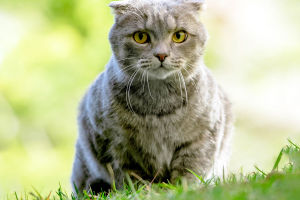Based on new genetic research, the domestication of cats can be traced back to nearly ten thousand years ago.
An international research team studied the genotypes of over 1,000 randomly bred cats from Europe, Asia, and Africa, focusing on nearly 200 genetic markers associated with geographical regions and breeds.
They speculate that the connection between humans and cats was likely triggered by changes in our ancestors' lifestyles.
Leslie Lyons, a feline geneticist at the University of Missouri College of Veterinary Medicine, stated, "One of the main DNA markers we studied is microsatellites, which are DNA sequences consisting of a few nucleotides repeated multiple times and mutate rapidly.
They can provide clues about the development of cat populations and breeds over the past few hundred years. Another important DNA marker is single nucleotide polymorphisms, which are single nucleotide variations in the entire genome, providing clues about ancient history thousands of years ago."
The team traced the earliest signs of domestication to the Fertile Crescent, the regions along the Tigris and Euphrates rivers in the Middle East. This area is considered the birthplace of the domestic cat story and is also known as the "cradle of civilization." As the current Holocene epoch began, humans shifted from nomadic hunting and gathering to settled farming, and cats' pest control services aided in this new role, leading communities to actively encourage their presence.
According to the latest evidence, these domesticated cats likely spread around the world with humans, rather than being domesticated simultaneously in different places. Thousands of years later, the cat genome shows signs of "distance isolation," meaning that as geographical distance increases, genetic similarity between populations decreases. For example, there are significant genetic differences in cat populations between Western Europe and Southeast Asia.
Researchers emphasized the differences in domestication and cohabitation with humans between domestic cats (Felis catus) and other animals like horses and dogs. Lyons said, "We can call cats semi-domesticated animals because if released into the wild, they can still rely on natural behaviors to hunt for pests, survive, and reproduce." Unlike with dogs or other domesticated animals, we haven't truly altered cat behavior, proving it to be a unique animal.
The team has established a genetic database of inherited diseases shared by cats and humans in this and previous studies, including blindness and specific types of dwarfism. The cat's genetic structure is closer to humans than most other non-primate mammals.
Additionally, polycystic kidney disease is a disease that can be fought through genetic information. Researchers significantly reduced the levels of this disease through genetic testing in Persian cats and are currently conducting diet-based treatment trials for humans.
Lyons stated, "If these trials are successful, we may be able to offer humans a more natural, healthier alternative to taking drugs that could lead to liver failure or other health problems. Our efforts will continue to be helpful, which is a fantastic thing."


